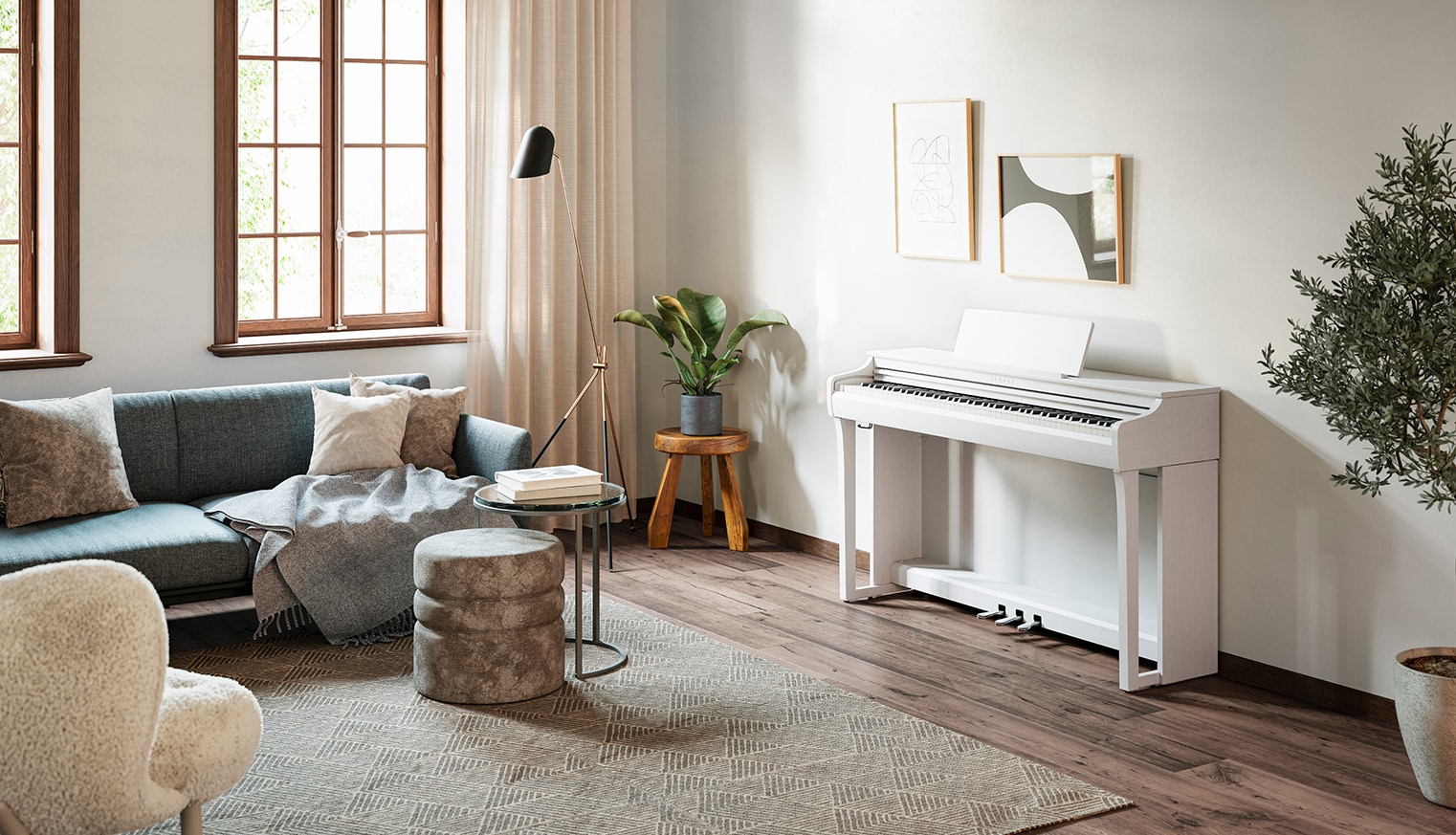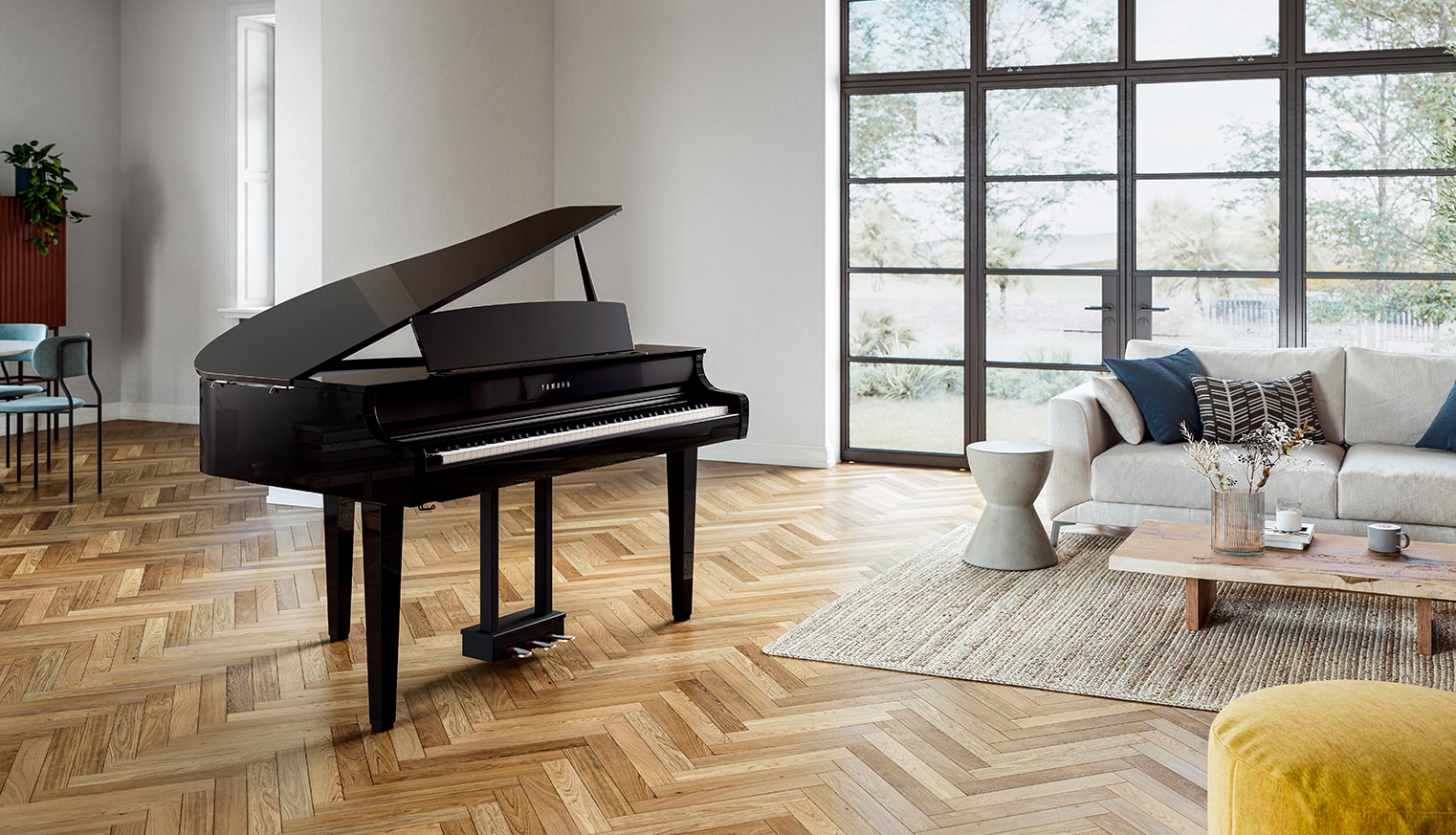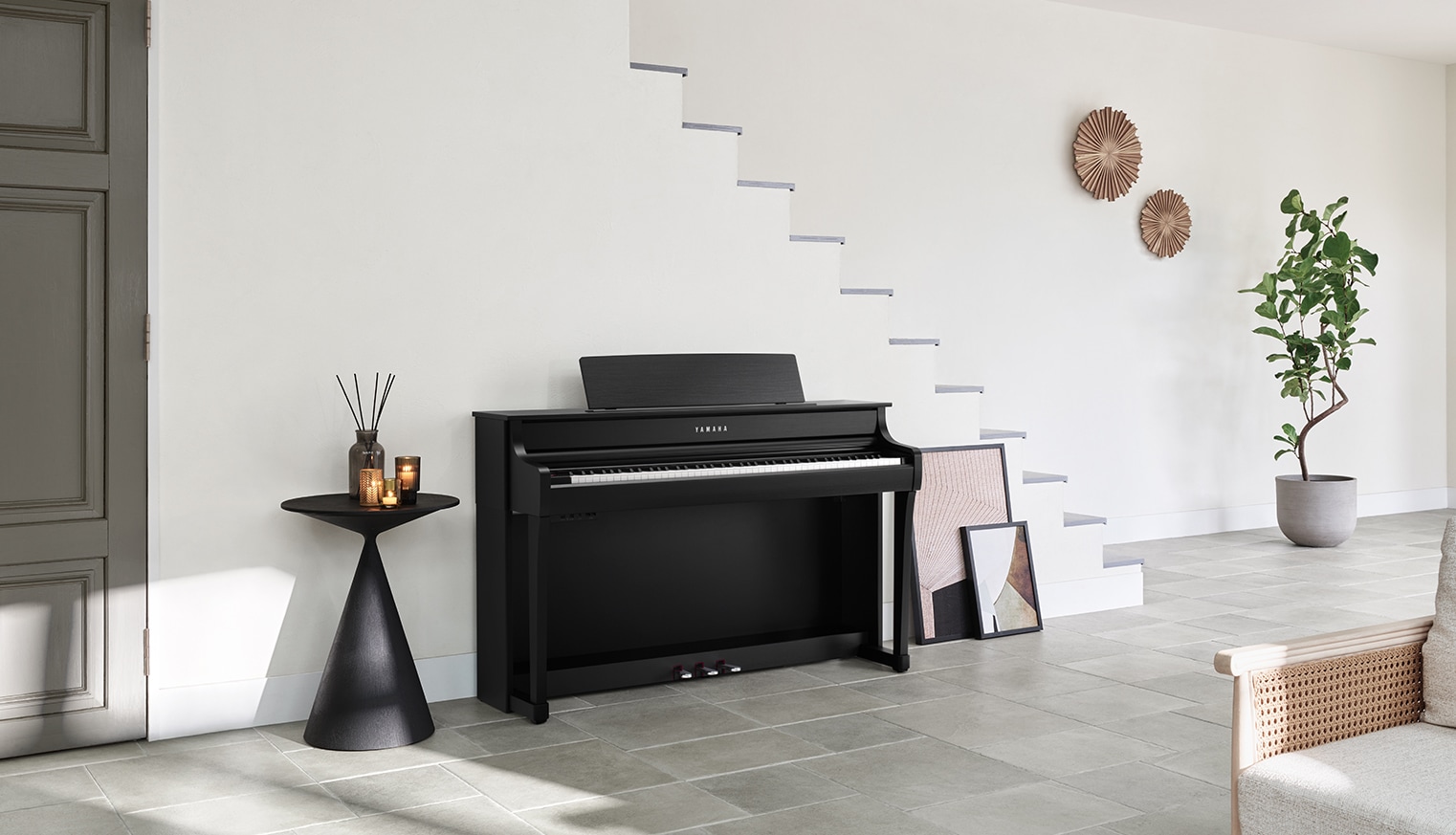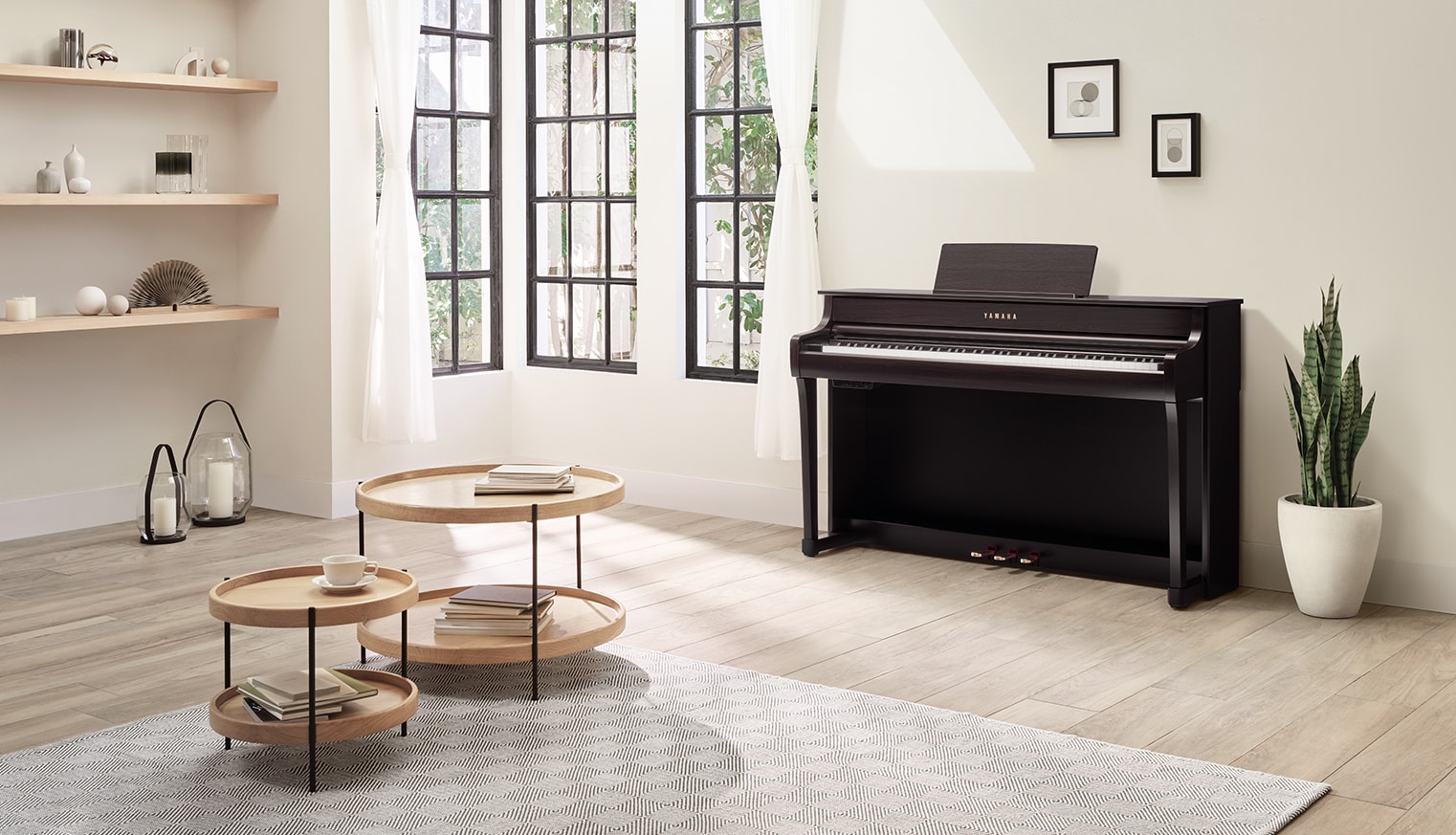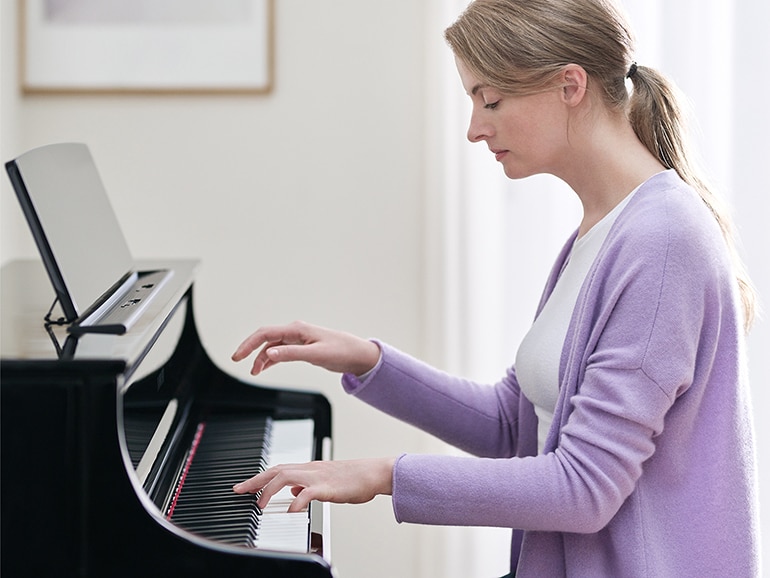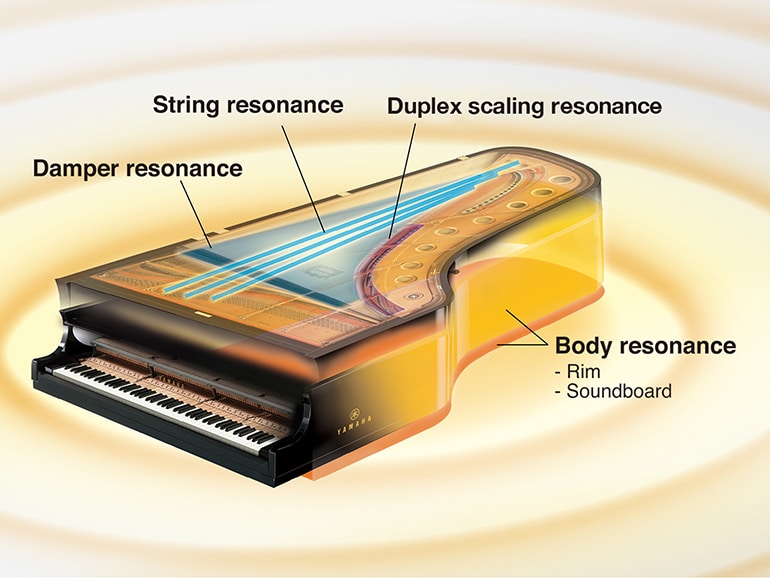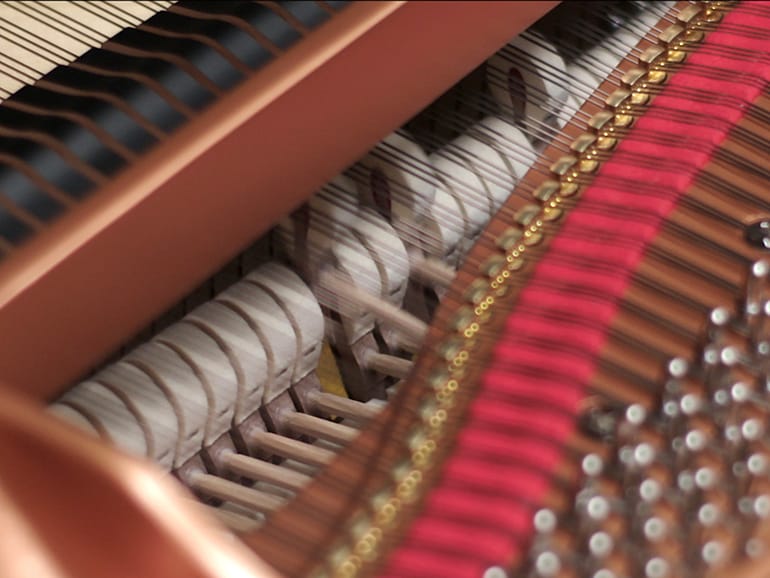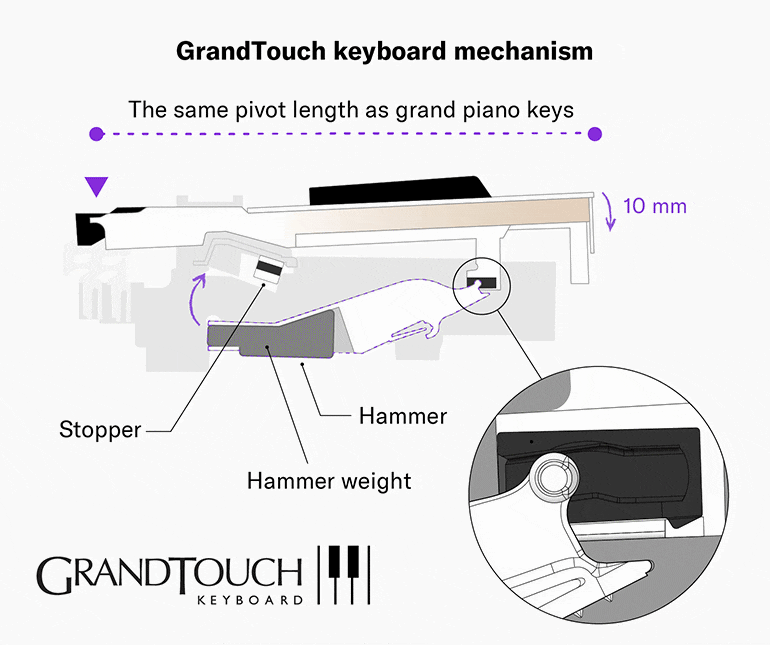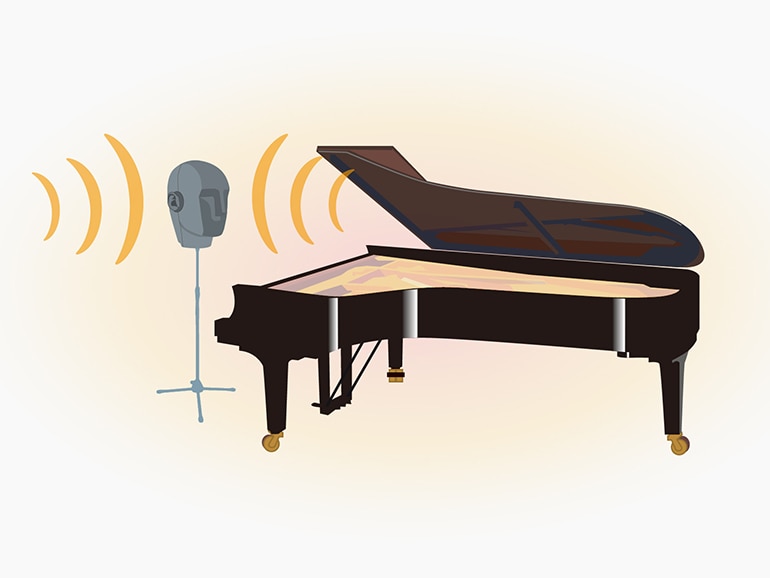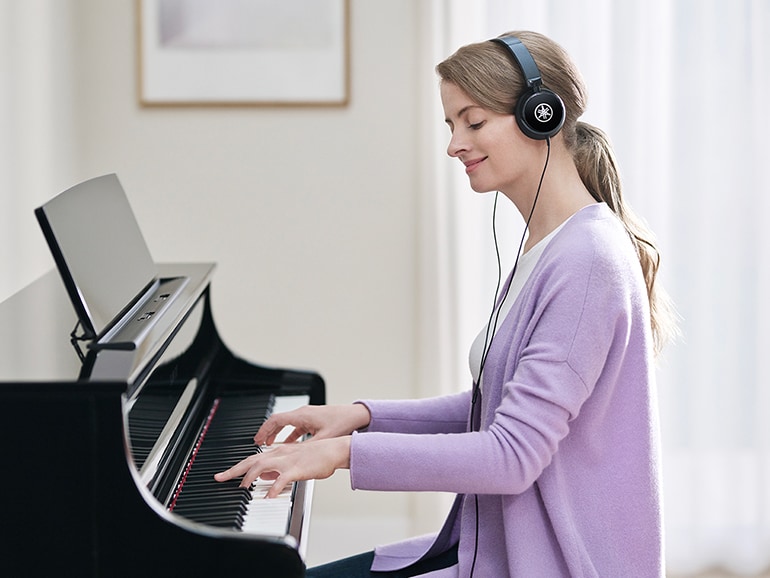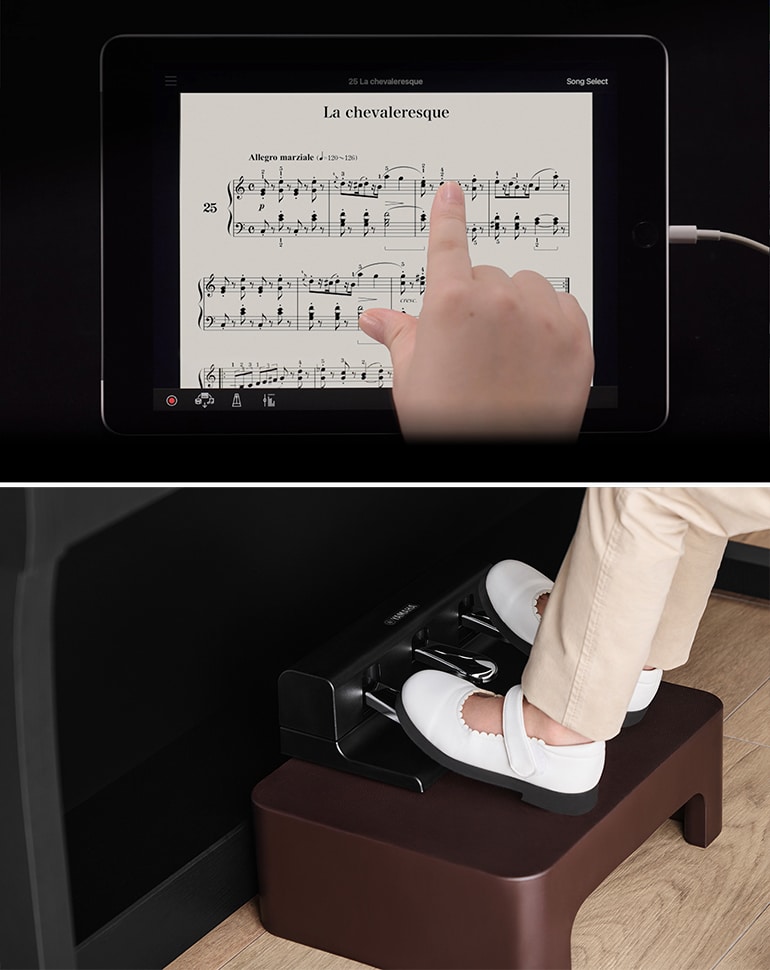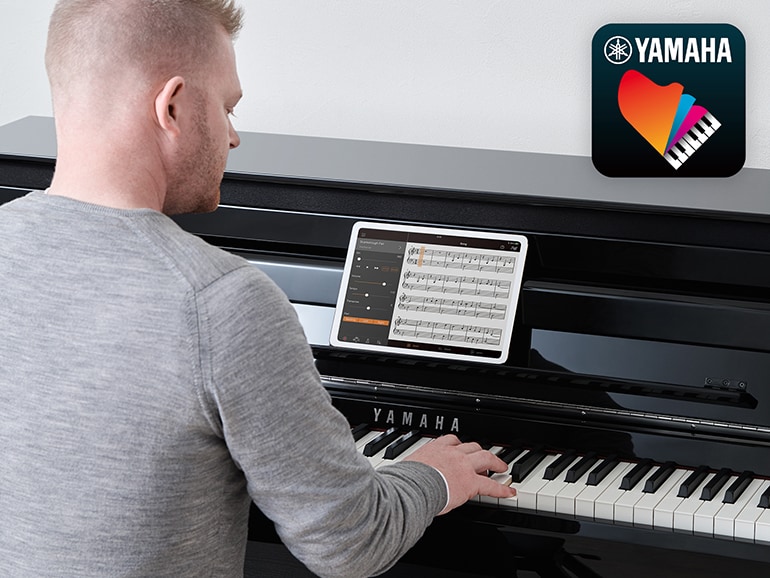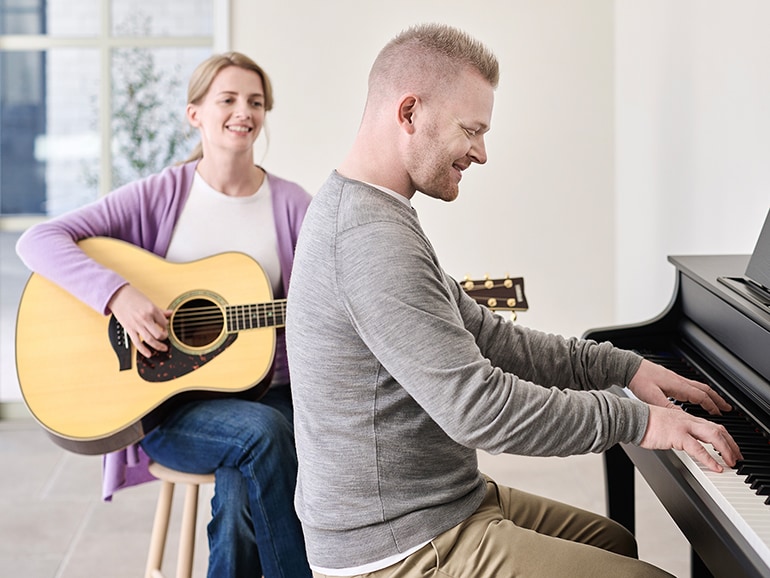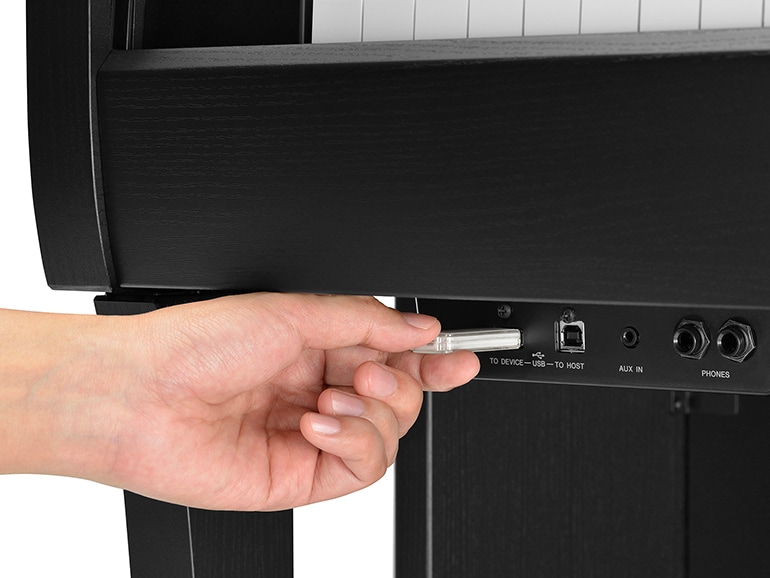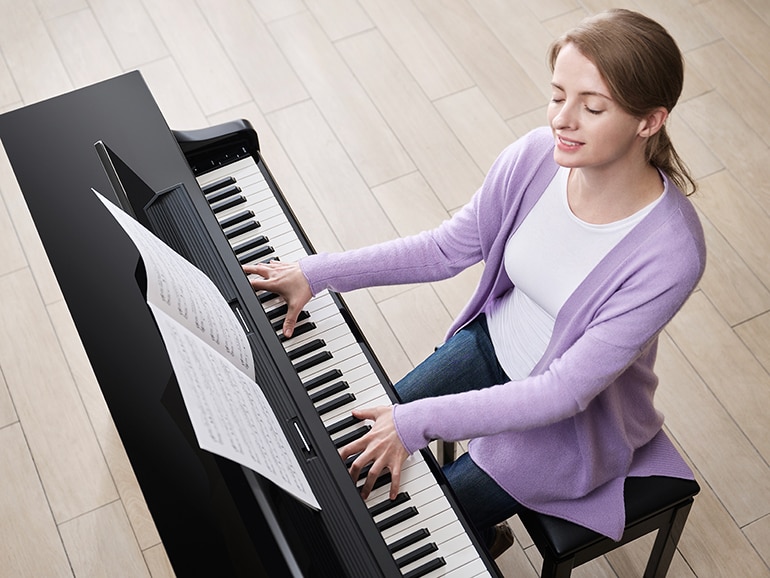The keys and pedals are the interface between player and instrument. The keys and pedals of CLP Series pianos are designed to feel as similar to their grand piano counterparts as possible, so that the way they behave in response to input from the fingers and toes perfectly matches the resulting sound output.
GrandTouch/GrandTouch-S keys
The GrandTouch and GrandTouch-S keyboards were designed around the concept of “a keyboard with the feel of a grand piano action,” with the goal of allowing pianists to feel the keyboard with their fingertips in the same way as they would when playing a grand piano, and from there to create exactly the sound that they are looking for. Specifically, these keyboards are notable for their responsiveness, offering everything from light, delicately nuanced tones to boldly powerful notes in answer to the strength with which the pianist plays the keys. They replicate the pleasing response felt when the grand piano hammers strike the string, and are free of any wobble when pressed to their fullest extent. Highly absorbent synthetic-ivory white keys and synthetic-ebony black keys prevent slipping even during extended play and feel just like those of a grand piano.
The GrandTouch keyboards equipping the top models in the CLP Series feature the longest-ever pivot length on a Yamaha digital piano, ensuring that the keys are easy to play from the edge to the back. Finally, Yamaha’s 88-key Linear Graded Hammers are the only* digital piano technology that provide a distinct touch for each key with the same weight and return for the corresponding key on a grand piano.
The GrandTouch-S keyboards on CLP-800 Series pianos are even more responsive than ever thanks to further optimization of the weights of the hammers.
*Yamaha research as of June 2024
GrandTouch pedals
The pianist controls the pedals to add expression to the music, and makes frequent fine adjustments to how deeply they depress them in order to create the envisioned sound.
On a grand piano, pedaling requires more force when depressing the pedal, with the pedal feeling lighter on the return. This is because lifting a heavy damper requires more power than lowering it. GrandTouch pedals differ significantly from those in previous CLP Series pianos in that they replicate not only the resistance on the toes when the pedals are depressed, but also how that resistance lessens as the pianist returns the pedals to their original positions, a telltale physical property of grand piano pedals. This enables more precise pedaling and subtler changes in tonal expression, not only when depressing the pedals, but also by making it easier to hold the pedals in mid-stroke and control them as they slowly return to their original positions.
The higher-end models also feature a GP Response Damper that starts out light to the touch and grows heavier as it is depressed and the pedaling begins to take effect, just like on a grand piano. This gives players the physical feedback they need to master the delicate art of half-pedaling.

